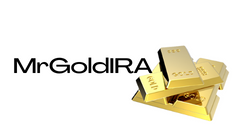
Introduction
Gold IRAs can serve as an excellent hedge against inflation because this precious metal has historically held its value during times of economic uncertainty. If you’re considering taking a withdrawal from your IRA, understanding gold IRA withdrawal policies is crucial to your financial security.
Gold IRA Withdrawal Rules
The IRS has several rules for withdrawing from gold IRA accounts to keep in mind. To help you understand gold IRA withdrawal policies, we’ll cover the rules for a few different types of gold IRAs, including traditional and Roth IRAs, below.
Traditional Gold IRA
With a traditional gold IRA, you make pre-tax contributions. This means you put money into the IRA before paying taxes on it. You’ll pay taxes when you withdraw money from your IRA. This type of IRA is best for people who think they’ll be in the same or a lower tax bracket once they hit retirement age.
You can withdraw funds penalty-free once you reach age 59½. When you take a withdrawal, you’ll be taxed at your current income tax rate.
Roth Gold IRA
If you’ve opted for a Roth gold IRA, you’ll fund your account with after-tax dollars, so you won’t pay taxes on those funds when you withdraw them. Roth gold IRAs are best for people who think they’ll be in a higher tax bracket when they retire.
As with traditional gold IRAs, you must be at least 59½ to take penalty-free withdrawals.

Direct Rollovers
You can perform a direct rollover if you’d like to use funds from your current IRA to fund a gold IRA. With a direct rollover, your plan administrator sends the money directly to your new account. You won’t have to pay taxes or penalties for using a direct rollover.
You can also opt for a 60-day rollover. With this option, your plan administrator gives you a check for the funds, and you’re responsible for depositing the money into your new account. If you don’t transfer the money within 60 days, the IRS will penalize you for taking an early withdrawal.
Inherited Gold IRA
The gold IRA distribution guidelines get more nuanced if you’ve inherited a gold IRA. You must withdraw funds from the IRA within ten years of inheriting it. The required minimum distributions (RMDs) you must take vary depending on:
- How you’re related to the account holder
- Whether the first account owner died before they were required to take RMDs
- Whether the account owner died after 2019
Gold IRA Withdrawal Penalties
If you withdraw money from your gold IRA before age 59½, this is called a non-qualified distribution, and you’ll have to pay a 10% penalty based on the value of your withdrawal. When you take an early withdrawal from a Roth IRA, you’ll also have to pay taxes on that amount, which will vary depending on your current income tax bracket.
There’s one more penalty to be aware of: the capital gains tax. If the value of your gold increases while in the IRA, you’ll have to pay a 28% capital gains tax on the funds. This tax can be quite expensive if you have a significant amount of gold in your account.
Early Withdrawal Exceptions
There are several exceptions to gold IRA withdrawal rules and penalties. We’ll go over each of these next.

Buying, Constructing, or Rebuilding a Home
If you’re buying or rebuilding a home, you can withdraw up to $10,000 from your gold IRA penalty-free.
Health Insurance Premiums If You’re Unemployed
If you can’t afford your health insurance premiums after losing your job, you can use money from your IRA to pay them without penalty.
Permanent Disability
If you have a permanent disability that makes it hard for you to afford necessities, the IRS allows you to take early withdrawals from your IRA without penalty.
Unreimbursed Medical Expenses
If you have medical expenses that your health insurance won’t cover, you can use your IRA funds to pay them without penalty. However, this only applies if you use the funds to pay your medical bills in the same year as the withdrawal.
Age-Related Exemptions
As mentioned above, you can withdraw funds from your gold IRA without penalty once you reach age 59½. If you’re younger, you’ll pay a 10% penalty.
Strategies for Safe Withdrawals
Want to make the most out of your gold IRA withdrawals? Consider the following strategies.
Diversification of Assets
You’ve probably heard the saying, "Don’t put all of your eggs in one basket," and that certainly applies to your retirement accounts. Gold is an appealing investment, but you shouldn’t solely rely on it to fund your retirement. It’s best to fund your IRA from a variety of sources in case one of those sources doesn’t pan out as you expected.
Consider Systematic Withdrawals
With a systematic withdrawal, you’ll take distributions at set intervals: monthly, quarterly, annually, or semi-annually. This allows you to receive a regular income to support yourself during retirement. It’s a smart way to supplement your Social Security earnings.
Following the proper gold IRA withdrawal rules requires that you calculate how much money to withdraw and how often. This should be based on your budget and retirement expenses. Many financial advisors say it’s a good idea to withdraw 3% to 4% of your total retirement assets annually.
Stay Informed on Market Conditions
Market conditions can affect how much you pay when taking distributions. For instance, if you withdraw from your IRA when gold’s value is high, you’ll pay more in capital gains tax than you would if you withdrew when its value was lower.
Keep an eye on gold price spot charts. These charts tell you the current value of gold, and you can also see its historical price for last year and beyond. This helps you determine whether the price of gold is going up or down.
Emergency Fund
Having an emergency fund to tide you over through unexpected setbacks is a good idea. For instance, if your car breaks down, you’ll need money to repair it. You may also need cash to pay for a medical treatment that Medicare/Medicaid won’t cover.
You can use money from your IRA to beef up your emergency fund. Have at least $500, ideally more, on hand for emergencies.
Review and Adjust
To get the most out of your IRA, review it and adjust your contributions annually. For 2024, you can contribute up to $7,000 (or $8,000 if you’re over the age of 50). This applies to Roth and traditional IRAs.
How Are Required Minimum Distributions (RMDs) Handled?
If you have a traditional gold IRA, you’ll have to plan to take the required minimum distributions. The IRS says you must
Frequently Asked Questions
How does a gold IRA work?
The Gold Ira Accounts are tax-free investment options for those who want to make investments in precious metals.
You can purchase physical gold bullion coins anytime. You don't have to wait until retirement to start investing in gold.
You can keep gold in an IRA forever. Your gold holdings will not be subject to tax when you are gone.
Your gold is passed to your heirs without capital gains tax. It is not required that you include your gold in the final estate report because it remains outside your estate.
First, an individual retirement account will be set up to allow you to open a golden IRA. Once you've done that, you'll receive an IRA custody. This company acts as a mediator between you, the IRS.
Your gold IRA custodian will handle the paperwork and submit the necessary forms to the IRS. This includes filing annual reports.
After you have created your gold IRA, the only thing you need to do is purchase gold bullion. The minimum deposit is $1,000. A higher interest rate will be offered if you invest more.
Taxes will apply to gold that you take out of an IRA. If you take out the whole amount, you'll be subject to income taxes as well as a 10 percent penalty.
A small percentage may mean that you don't have to pay taxes. There are exceptions. However, there are exceptions. If you take 30% or more of your total IRA asset, you'll owe federal Income Taxes plus a 20% penalty.
Avoid taking out more that 50% of your total IRA assets each year. You could end up with severe financial consequences.
How much do gold IRA fees cost?
The Individual Retirement Account (IRA), fee is $6 per monthly. This fee includes account maintenance fees as well as any investment costs related to your selected investments.
Diversifying your portfolio may require you to pay additional fees. The type of IRA you choose will determine the fees. Some companies offer free checking, but charge monthly fees for IRAs.
In addition, most providers charge annual management fees. These fees vary from 0% to 11%. The average rate for a year is.25%. These rates can often be waived if a broker, such as TD Ameritrade, is involved.
Are You Ready to Invest in Gold?
How much money you have saved, and whether or not gold was an option when you first started saving will determine the answer. You can invest in both options if you aren't sure which option is best for you.
In addition to being a safe investment, gold also offers potential returns. Retirement investors will find gold a worthy investment.
While many investments promise fixed returns, gold is subject to fluctuations. Its value fluctuates over time.
This doesn't mean that you should not invest in gold. You should just factor the fluctuations into any overall portfolio.
Another benefit to gold is its tangible value. Gold is much easier to store than bonds and stocks. It's also portable.
As long as you keep your gold in a secure location, you can always access it. There are no storage charges for holding physical gold.
Investing in gold can help protect against inflation. It's a great way to hedge against rising prices, as gold prices tend to increase along with other commodities.
Also, you'll reap the benefits of having some savings invested in something with a stable value. Gold usually rises when the stock market falls.
Another benefit to investing in gold? You can always sell it. Just like stocks, you can liquidate your position whenever you need cash. You don't even need to wait for your retirement.
If you do decide to invest in gold, make sure to diversify your holdings. Don't put all your eggs on one basket.
Don't buy too many at once. Start with just a few drops. Then add more as needed.
It's not about getting rich fast. It is to create enough wealth that you no longer have to depend on Social Security.
And while gold might not be the best investment for everyone, it could be a great supplement to any retirement plan.
What Is a Precious Metal IRA?
A precious metal IRA allows for you to diversify your retirement savings in gold, silver, palladium and iridium. These are called “precious” metals because they're very hard to find and very valuable. These are excellent investments that will protect your wealth from inflation and economic instability.
Bullion is often used to refer to precious metals. Bullion refers simply to the physical metal.
You can buy bullion through various channels, including online retailers, large coin dealers, and some grocery stores.
You can invest directly in bullion with a precious metal IRA instead of buying shares of stock. You'll get dividends each year.
Precious Metal IRAs don’t require paperwork nor have annual fees. Instead, you only pay a small percentage on your gains. Plus, you get free access to your funds whenever you want.
How is gold taxed within a Roth IRA
Investment accounts are subject to tax based only on their current value and not the amount you originally paid. Any gains made by you after investing $1,000 in a stock or mutual fund are subject to tax.
However, if the money is deposited into a traditional IRA/401(k), the tax on the withdrawal of the money is not applicable. You pay taxes only on earnings from dividends and capital gains — which apply only to investments held longer than one year.
Each state has its own rules regarding these accounts. Maryland is an example of this. You must withdraw your funds within 60 calendar days of turning 59 1/2. In Massachusetts, you can wait until April 1st. New York has a maximum age limit of 70 1/2. To avoid penalties, you should plan ahead and take distributions as soon as possible.
What precious metals could you invest in to retire?
Silver and gold are two of the most valuable precious metals. Both are easy to sell and can be bought easily. These are great options to diversify your portfolio.
Gold: Gold is one the oldest forms currency known to man. It is very stable and secure. Because of this, it is considered a great way of preserving wealth during times when there are uncertainties.
Silver: The popularity of silver has always been a concern for investors. This is a great choice for people who want to avoid volatility. Silver is more volatile than gold. It tends to rise rather than fall.
Platinium is another precious metal that is becoming increasingly popular. It's resistant to corrosion and durable, similar to gold and silver. However, it's much more expensive than either of its counterparts.
Rhodium: The catalytic converters use Rhodium. It is also used for jewelry making. It is also very affordable in comparison to other types.
Palladium (or Palladium): Palladium can be compared to platinum, but is much more common. It is also cheaper. It is a preferred choice among investors who are looking to add precious materials to their portfolios.
Who owns the gold in a Gold IRA?
The IRS considers an individual who owns gold as holding “a form of money” subject to taxation.
You must have gold at least $10,000 and it must be stored for at the least five years in order to take advantage of this tax-free status.
Although gold can help to prevent inflation and price volatility, it's not sensible to have it if it's not going to be used.
If you are planning to sell your gold someday, it is necessary that you report its value. This can affect the capital gains taxes that you owe when cashing in on investments.
Consult a financial advisor or accountant to determine your options.
Statistics
- You can only purchase gold bars at least 99.5% purity. (forbes.com)
- The price of gold jumped 131 percent from late 2007 to September 2011, when it hit a high of $1,921 an ounce, according to the World Gold Council. (aarp.org)
- Indeed, several financial advisers interviewed for this article suggest you invest 5 to 15 percent of your portfolio in gold, just in case. (aarp.org)
- Gold is considered a collectible, and profits from a sale are taxed at a maximum rate of 28 percent. (aarp.org)
- If you accidentally make an improper transaction, the IRS will disallow it and count it as a withdrawal, so you would owe income tax on the item's value and, if you are younger than 59 ½, an additional 10% early withdrawal penalty. (forbes.com)
External Links
investopedia.com
irs.gov
law.cornell.edu
- 7 U.S. Code SS7 – Designation of boards for trade as contract markets
- 26 U.S. Code SS 408 – Individual retirement funds
bbb.org
How To
How to Keep Physical Gold in an IRA
An easy way to invest gold is to buy shares from gold-producing companies. However, this method comes with many risks because there's no guarantee that these companies will continue to survive. Even if they survive, there's always the risk that they will lose money due fluctuations in gold prices.
Another option is to purchase physical gold. You'll need to open a bank account, buy gold online from a trusted seller, or open an online bullion trading account. This option is convenient because you can access your gold when it's low and doesn't require you to deal with stock brokers. It's also easier to see how much gold you've got stored. The receipt will show exactly what you paid. You'll also know if taxes were not paid. You also have a lower chance of theft than stocks.
However, there are disadvantages. You won't get the bank's interest rates or investment money. You won't have the ability to diversify your holdings; you will be stuck with what you purchased. Finally, tax man may want to ask where you put your gold.
BullionVault.com has more information about how to buy gold in an IRA.
—————————————————————————————————————————————————————————————-
By: Learn About Gold
Title: The Importance of Understanding Gold IRA Withdrawal Rules
Sourced From: learnaboutgold.com/blog/gold-ira-withdrawal-rules/
Published Date: Fri, 16 Feb 2024 19:44:46 +0000















